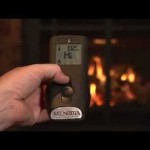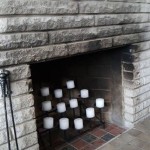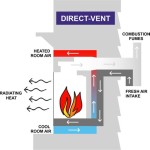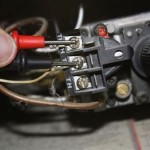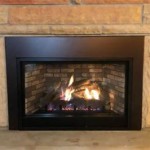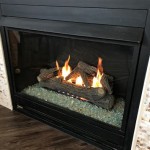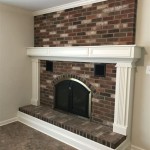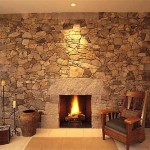Regency Gas Fireplace Insert Parts: A Comprehensive Overview
Regency gas fireplace inserts provide an effective and aesthetically pleasing heating solution for homes. Understanding the various components that constitute these inserts is crucial for maintenance, troubleshooting, and potential repairs. This article presents a detailed examination of the key parts commonly found in Regency gas fireplace inserts, outlining their function and significance within the overall system.
Gas Valve and Control System
The gas valve serves as the central control point for fuel entering the fireplace insert. It regulates the flow of natural gas or propane, ensuring it is delivered at the correct pressure and volume for efficient combustion. Regency gas valves are often sophisticated components, incorporating safety features that prevent gas leakage and ensure proper ignition. These valves typically include a solenoid, which is an electrically controlled valve that opens and closes based on signals from the control module.
The control system, often referred to as the millivolt or electronic ignition system, manages the overall operation of the fireplace. In millivolt systems, the pilot light generates a small electrical current (millivolts) that powers the gas valve. Electronic ignition systems utilize a spark igniter to light the pilot, and the gas valve is controlled by a circuit board. These systems commonly incorporate features such as thermostat control, remote control compatibility, and safety shut-off mechanisms that activate in the event of a malfunction or gas leak. Digital displays and control panels on the fireplace insert provide users with the ability to adjust settings, monitor temperature, and diagnose potential issues.
Within the control system, components like the thermocouple or thermopile play a vital role in safety. The thermocouple, used in millivolt systems, senses the presence of the pilot flame. If the pilot flame is extinguished, the thermocouple cools down, interrupting the electrical current and causing the gas valve to close, thus preventing gas from escaping. A thermopile, essentially a series of thermocouples, generates a larger electrical current, which may be used to power additional features such as a fan or remote control receiver.
Burner Assembly and Combustion Chamber
The burner assembly is the heart of the gas fireplace insert, where the controlled gas flow mixes with air and ignites to produce flames. Burners are typically constructed of cast iron, stainless steel, or other durable materials to withstand the high temperatures generated during combustion. The design of the burner is critical for achieving a consistent and visually appealing flame pattern. Different burner designs can produce varying flame heights, widths, and colors.
The combustion chamber, the enclosed space surrounding the burner, is designed to contain and direct the heat and gases produced during combustion. It is typically lined with refractory materials, such as ceramic fiber blankets or firebricks, which are highly resistant to heat and help to radiate warmth into the room. The shape and size of the combustion chamber influence the efficiency of heat transfer and the overall aesthetic of the fireplace.
Air inlets and vents are strategically positioned in and around the combustion chamber to provide the necessary oxygen for combustion and to exhaust the byproducts of combustion, primarily carbon dioxide and water vapor. Proper ventilation is essential for safe and efficient operation of the fireplace insert. A blocked or obstructed vent can lead to incomplete combustion, resulting in the production of carbon monoxide, a dangerous and odorless gas. Therefore, regular inspection and cleaning of vents are crucial for maintaining the safety and performance of the fireplace insert.
Glass Front and Decorative Components
The glass front is a prominent feature of most Regency gas fireplace inserts, providing a clear view of the flames while also serving as a safety barrier. The glass is typically tempered or ceramic glass, designed to withstand high temperatures without shattering. A gasket or seal around the perimeter of the glass ensures an airtight closure, preventing flue gases from escaping into the room.
The door frame that houses the glass provides structural support and enhances the overall appearance of the fireplace insert. Door frames are often made of cast iron or steel and can be finished in a variety of styles and colors to complement the surrounding décor. Some models feature arched or rectangular door designs, while others offer more contemporary looks with clean lines and minimal ornamentation.
Log sets or decorative media are placed within the combustion chamber to create a realistic and visually appealing fire display. Log sets are typically made of ceramic fiber or refractory cement and are molded to resemble natural wood. Decorative media options include glass beads, stones, and other materials that offer a more modern aesthetic. The placement and arrangement of the log set or decorative media can significantly impact the flame pattern and overall appearance of the fireplace.
Aesthetic panels, surrounds, or fronts may encompass the entire fireplace insert, providing a finished look and integrating the unit seamlessly into the existing fireplace opening or wall. These panels are available in a wide range of materials, styles, and finishes to match various architectural designs. They can be constructed from materials like steel, cast iron, or stone veneers and may feature decorative elements such as raised panels, moldings, or tile accents.
Fan and Blower Assembly
Many Regency gas fireplace inserts incorporate a fan or blower assembly to circulate heated air more efficiently and distribute it throughout the room. The fan typically consists of an electric motor, a blower wheel, and a housing. The blower wheel draws cool air from the room, passes it over the heated surfaces of the combustion chamber, and then expels the warmed air back into the room.
The fan speed is often adjustable, allowing users to control the amount of airflow and the rate of heat distribution. Some models feature automatic fan control, which regulates the fan speed based on the temperature of the fireplace insert. This helps to maintain a consistent room temperature and prevent overheating.
The fan assembly can be a significant source of noise, particularly at higher speeds. The quality of the motor and blower wheel, as well as the design of the housing, can influence the noise level. Regular cleaning and lubrication of the fan assembly can help to reduce noise and extend its lifespan. In some units, a thermodisc is responsible for turning the fan on and off based on the temperature of the unit. If the thermodisc fails, the fan will not operate as intended.
Venting System
The venting system is a critical component of a Regency gas fireplace insert, responsible for safely removing the byproducts of combustion, including carbon dioxide, water vapor, and other gases, from the home. Gas fireplace inserts typically utilize direct vent or B-vent systems.
Direct vent systems draw combustion air from outside the home and exhaust flue gases to the outside through a coaxial or concentric vent pipe. This sealed system prevents flue gases from entering the room and ensures efficient combustion. Direct vent systems can be vented horizontally through an exterior wall or vertically through the roof. The venting system must be installed according to the manufacturer's specifications to ensure proper operation and safety.
B-vent systems, also known as natural vent systems, draw combustion air from within the room and exhaust flue gases through a single-wall or double-wall metal vent pipe. These systems rely on natural convection to create a draft that draws the flue gases upward and out of the home. B-vent systems are typically used in older homes with existing chimneys. The venting system must be properly sized and installed to prevent backdrafting and ensure safe operation.
Within the venting system, various components contribute to safe and effective exhaust. Vent pipes, elbows, and connectors are used to route the vent from the fireplace insert to the exterior of the home. A vent cap or termination is installed at the end of the vent pipe to prevent rain, snow, and debris from entering the system. Regular inspection and cleaning of the venting system are essential to ensure proper airflow and prevent blockages. Creosote build-up is less of a concern with gas fireplaces than with wood-burning appliances, but other debris can still accumulate and impede ventilation.
Pilot Assembly
The pilot assembly is responsible for creating the initial flame that ignites the main burner. It consists of a small burner head, a gas orifice, and an igniter. The igniter may be a spark igniter, used in electronic ignition systems, or a pilot generator (thermocouple/thermopile), used in millivolt systems.
The pilot flame must be properly adjusted to ensure reliable ignition of the main burner. The flame should be stable, blue in color, and large enough to encompass the thermocouple or thermopile in millivolt systems. A weak or unstable pilot flame can result in difficulty starting the fireplace or intermittent shut-off.
The gas orifice is a small opening that regulates the flow of gas to the pilot burner. An obstructed or partially blocked orifice can result in a weak or erratic pilot flame. Regular cleaning of the gas orifice is necessary to maintain proper pilot flame performance. The pilot assembly is a critical safety component, and any malfunctions or issues should be addressed promptly by a qualified technician.

Energy Gas Fireplace Insert U20 Cozy Cabin Regency Parts

Regency Replacement Parts Friendly Fires

Grandview Natural Gas Fireplace G800ec Ng Cozy Cabin Regency Parts

Grandview Medium Direct Vent Propane Gas Fireplace G800c Ng Cozy Cabin Regency Parts

Horizon Natural Gas Fireplace Hz33ce Ng11 Cozy Cabin Regency Parts

Regency F3500 Wood Stove Main Assembly Parts Impressive Climate

Regency Fan Blower Replacement Gas Inserts U32 2 910 215 P Friendly Fires

Regency I1500 Wood Burning Fireplace Insert Showroom Floor Model

Regency F5200 Wood Stove Main Assembly Parts Impressive Climate

Regency Grandview G800ec Gas Fireplace Hearth Appliances
Related Posts

